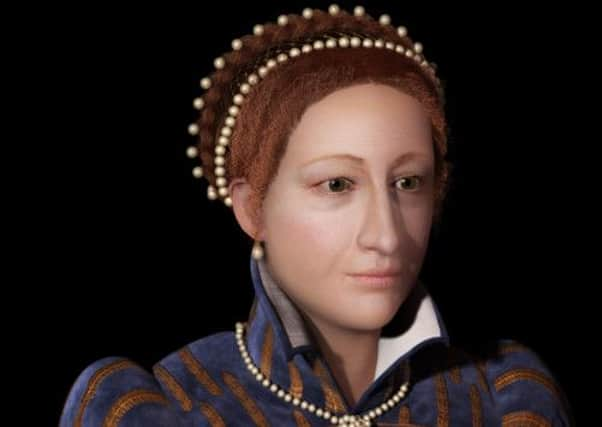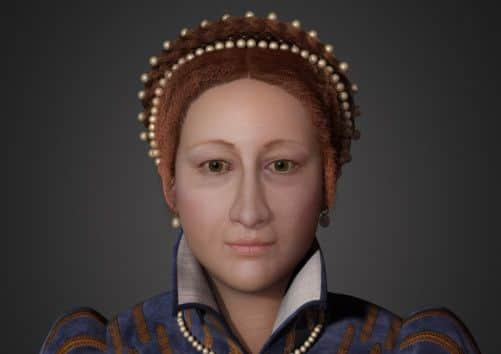New image shows Mary Queen of Scots’ face


Forensic and digital experts have joined forces to create the animated reconstruction of what Mary would have looked like at the end of her brief but turbulent reign in Scotland.
The National Museum of Scotland commissioned the reconstruction for its vast new exhibition, which opens tomorrow, after discovering a “significant gap” in the portrait record of Mary covering her six-year rule in Scotland from 1561-67 before her 19 years of imprisonment in England.
Advertisement
Hide AdThe reconstruction, a one-off created for the Edinburgh attraction from collections around the UK and in France, will feature alongside the biggest collection of paintings, jewellery, furniture, drawings, maps and documents ever assembled.


The “once in a lifetime” exhibition charts Mary’s life from her birth at Linlithgow Palace and her early life in France before her dramatic return at the age of 18.
The monarch’s disastrous marriage to the Earl of Darnley, his bloody murder close to the site of where the museum now sits in Edinburgh, and her execution after plotting to depose Queen Elizabeth from the throne is also chronicled.
Rarely-seen exhibits, personal artefacts and possessions, priceless documents and costumes have been brought together from the likes of Holyrood Palace, the British Museum and the Louvre in Paris. The exhibition is brought up to date with stage costumes for an English National Opera production by Jasper Conran and newly-commissioned models of Mary and the Earl of Darnley in their intricate costumes.
Around 200 objects from 35 different sources feature in the exhibition, with highlights including the earliest surviving letter she wrote, the death warrant which sealed her fate and some of the earliest-known maps of Edinburgh, as well as a 16th century musical instrument, costumes, a board game, an archery set, tapestries and precious religious relics.
Professor Caroline Wilkinson, from Dundee University, who worked on the famous reconstruction of Richard III last year, joined forces with Janice Aitken, a digital animation and artist from Duncan of Jordanstone College of Art, to produce the new depiction.
Advertisement
Hide AdThe museum said the facial reconstruction, which captures Mary at the age of 25, had been specially designed to depict “what Mary may have looked like by the end of her reign, based upon the existing portraiture and what we know of her life and times.”
By this time, Mary was twice widowed, accused of murder and about to be forced from the Scottish throne into eventual exile and imprisonment in England.
Advertisement
Hide AdProfessor Wilkinson added: “This project was a lot different from the usual work that I do in that I usually have a skull to work with.
“It was much more about looking at all the different portraits and the various angles in them from the period outwith the time Mary ruled in Scotland.
“A key part of what we did was try to reflect the strain she would have been under with so much happening in her life. It is little wonder she did not have time to sit for a portrait.
“It was a really enjoyable project to work on because it was such a change from what we normally do and she was such an iconic figure.”
Mary was born in Linlithgow Palace in 1542 as the only child of James V of Scotland and his French wife, Mary of Guise, but her father was to die just six days later.
Although she effectively became Queen at that time she spent most of her childhood in France and on return to Scotland at the age of 18 faced a host of challenges - particularly as a Catholic in a country that was officially Protestant.
Advertisement
Hide AdThe exhibition looks at the impact of the Reformation in Scotland and the rise to prominence of John Knox, Mary’s claim to the English throne through her own family, and the legacy of her impact on Scottish history.
Exhibition curator David Forsyth said: “Mary, Queen of Scots is unquestionably the most famous Scottish woman of all time.
Advertisement
Hide Ad“The story of her death and execution is pretty well known, and we do deal with that in the exhibition, as it is a key part of her story, but we wanted to really look at her as living Queen, when she comes back from France and has to negotiate a really difficult path.”